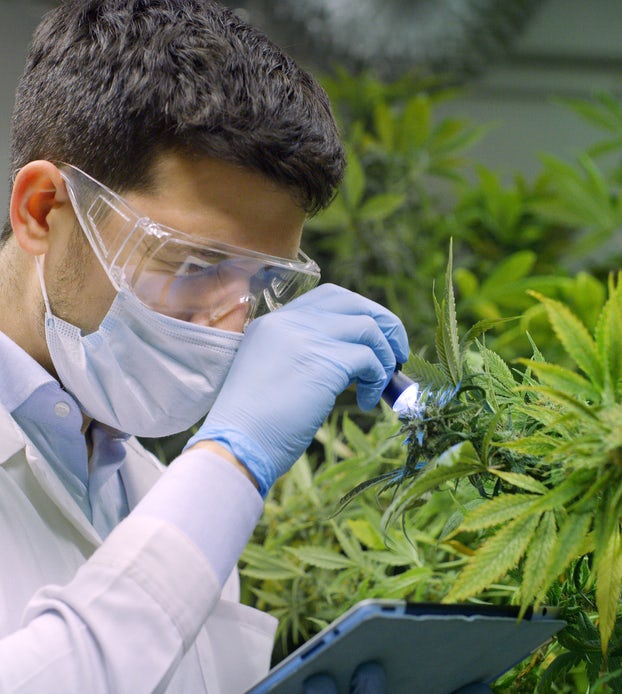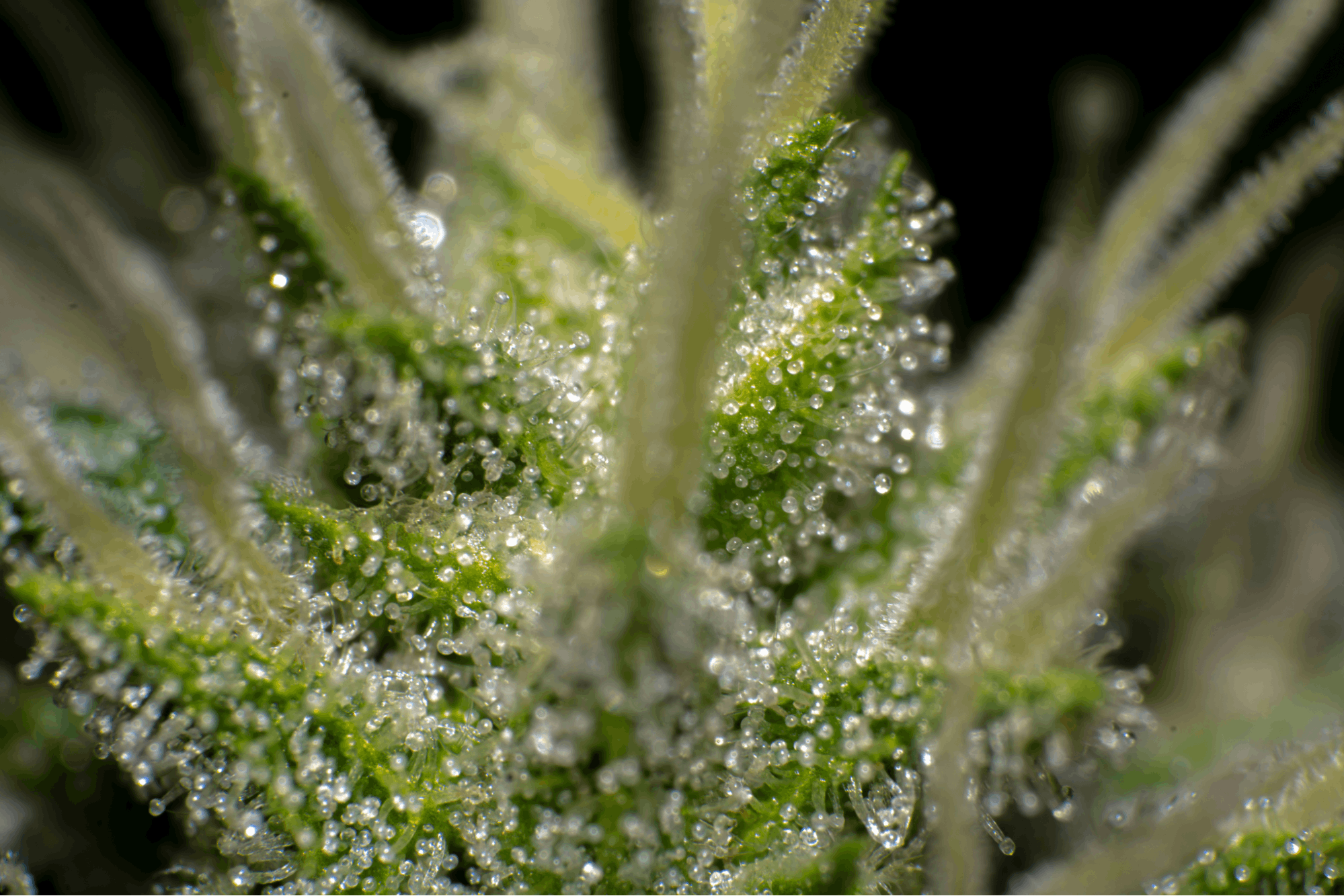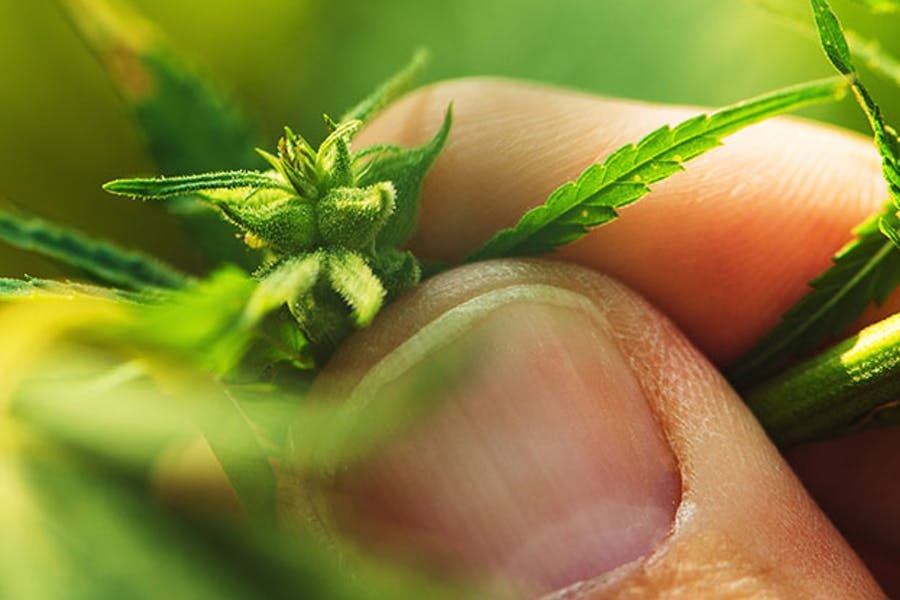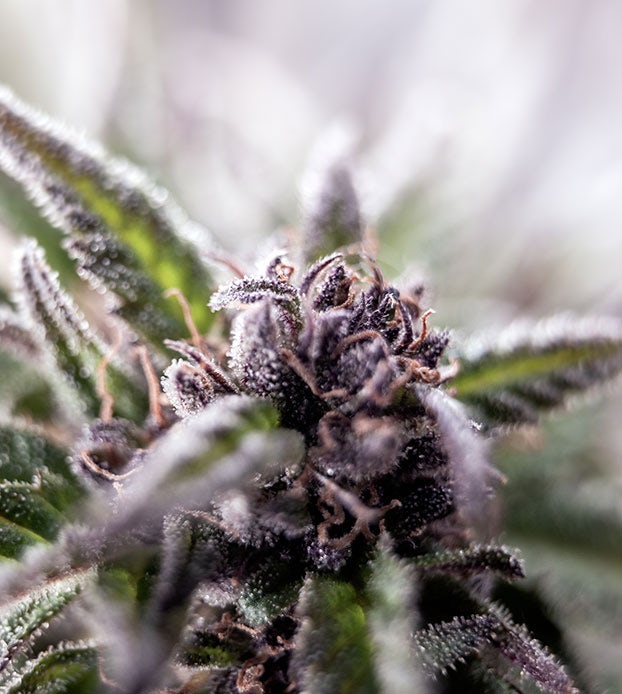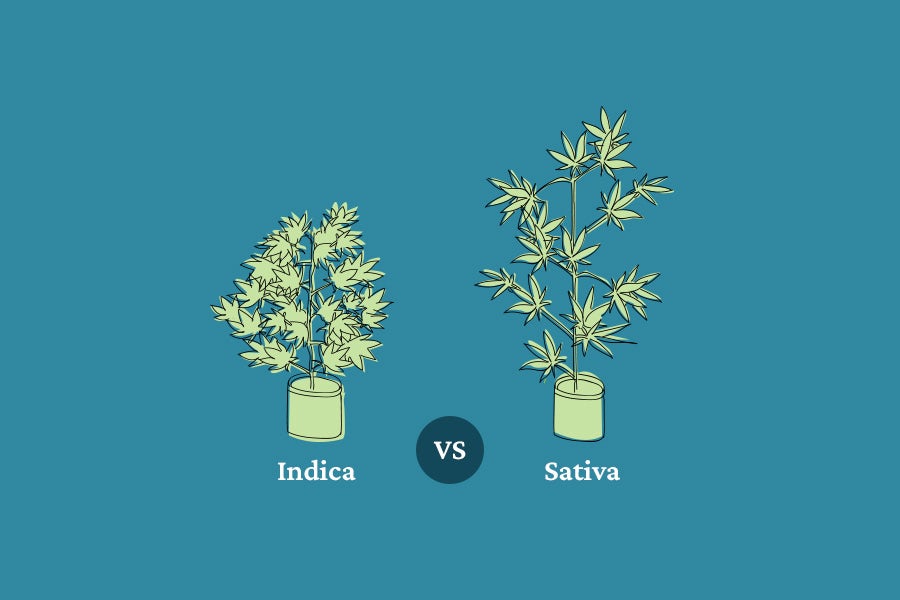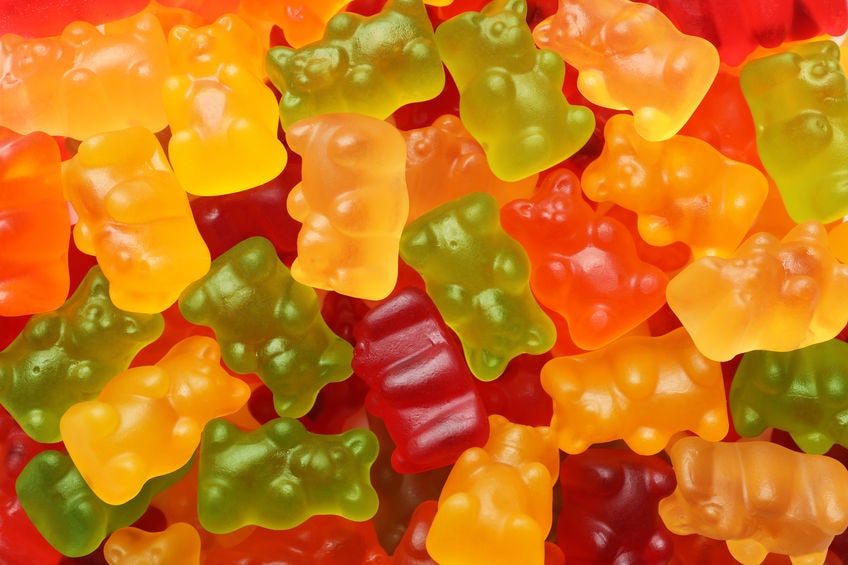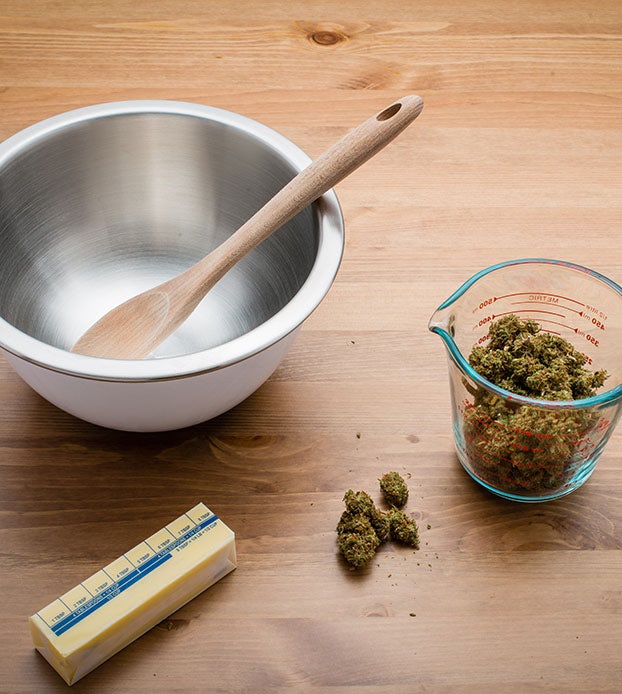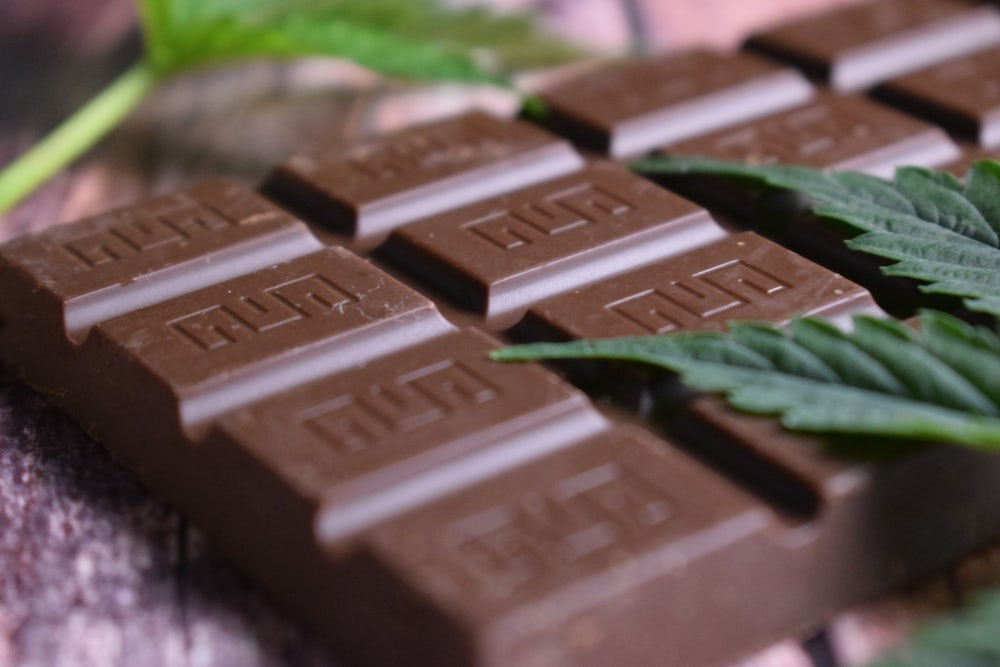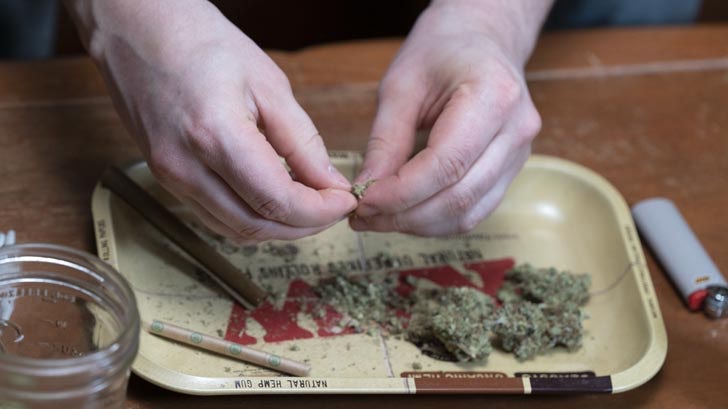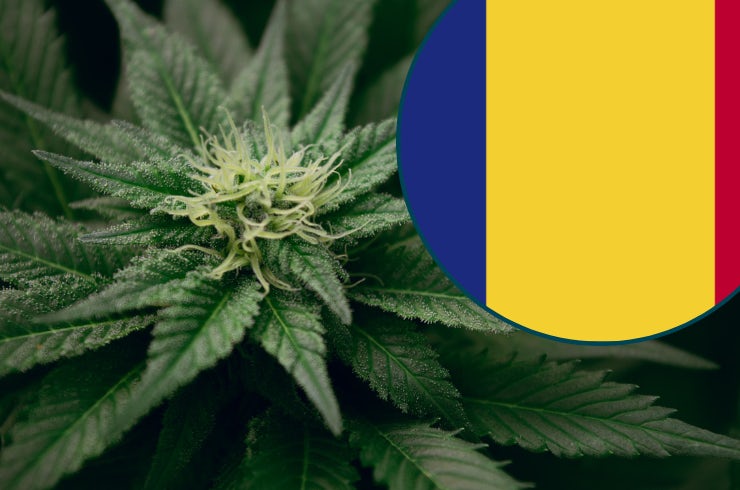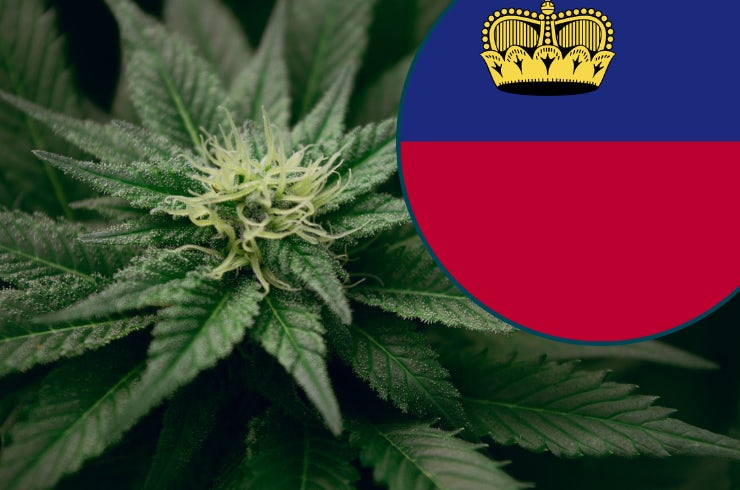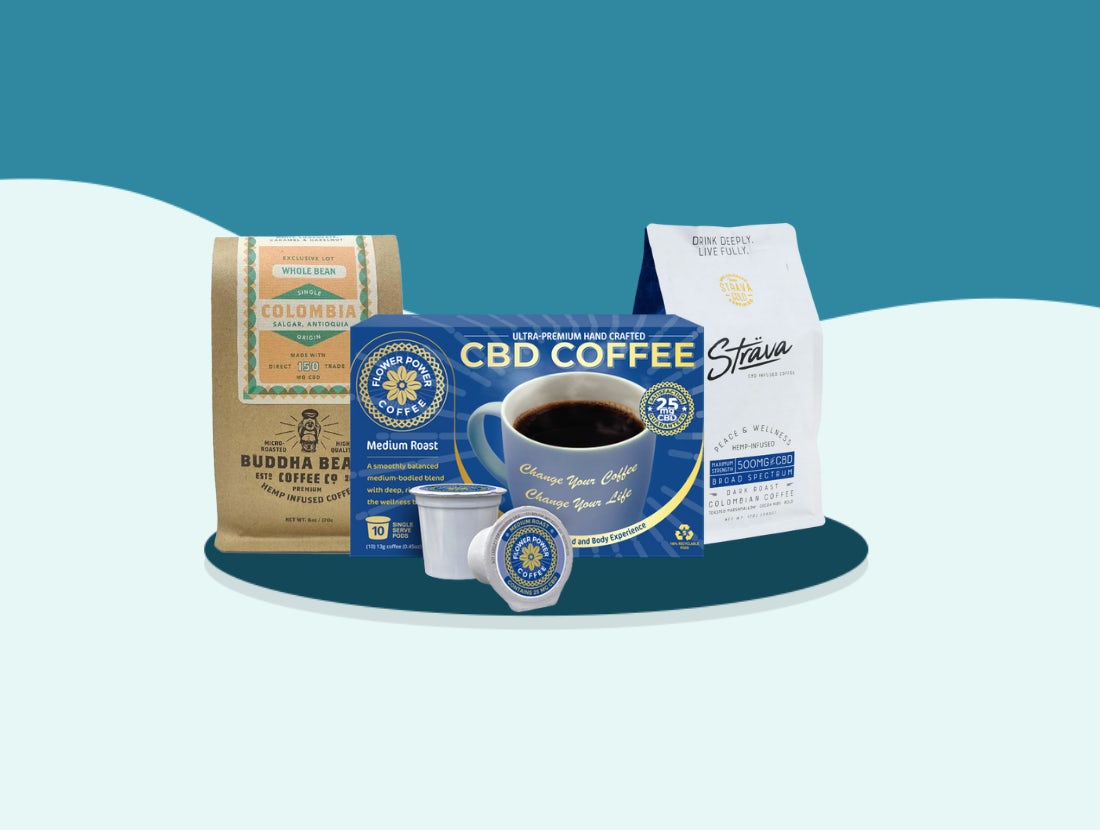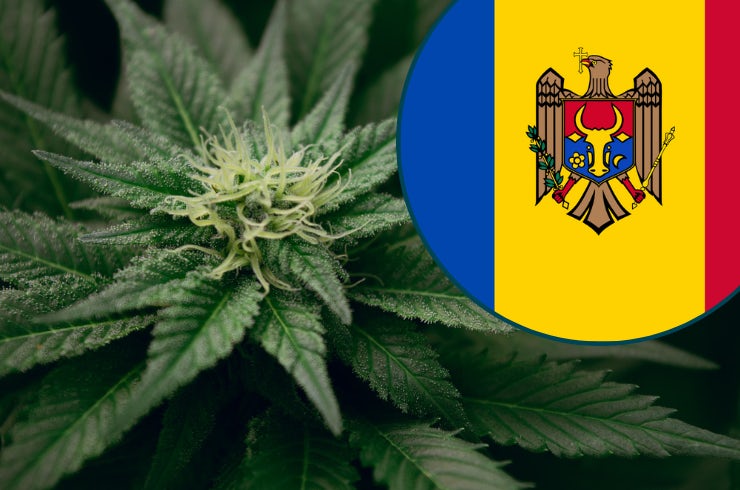CBDA, also known as cannabidiolic acid or CBDA, is a chemical naturally produced by cannabis and is especially abundant in freshly-harvested hemp plants. 1
While cannabis contains a multitude of different chemical compounds – most research into cannabis’ benefits have focused on THC or CBD.
CBDA is a less studied cannabinoid but it is beginning to gain attention for its potential medical uses for a variety of applications including pain, inflammation, cancer, and COVID-19. While CBDA is the acidic precursor of CBD (in other words, it can transform into CBD), it is a distinct chemical with its own properties.
What does CBDA help with?
Research into CBDA is in very early stages, and mostly comes from lab and animal studies. These studies have suggested multiple ways that CBDA might be helpful for humans, but we need human studies to confirm these findings. Still, the preclinical research shows potential for CBDA to help with issues such as:
While other cannabinoids can also help with some of these issues, CBDA has shown special promise for some of the more debilitating conditions on the list.
In research performed by GW pharmaceuticals, CBDA outperformed CBD as a potential seizure medication. CBDA has also shown the ability to suppress COX-2 and reduce breast cancer cell migration, which are important factors for fighting breast cancer. 2 3
Perhaps most interesting, a recent study found CBDA may be able to help prevent COVID-19 infection by binding to the virus’ spike protein.
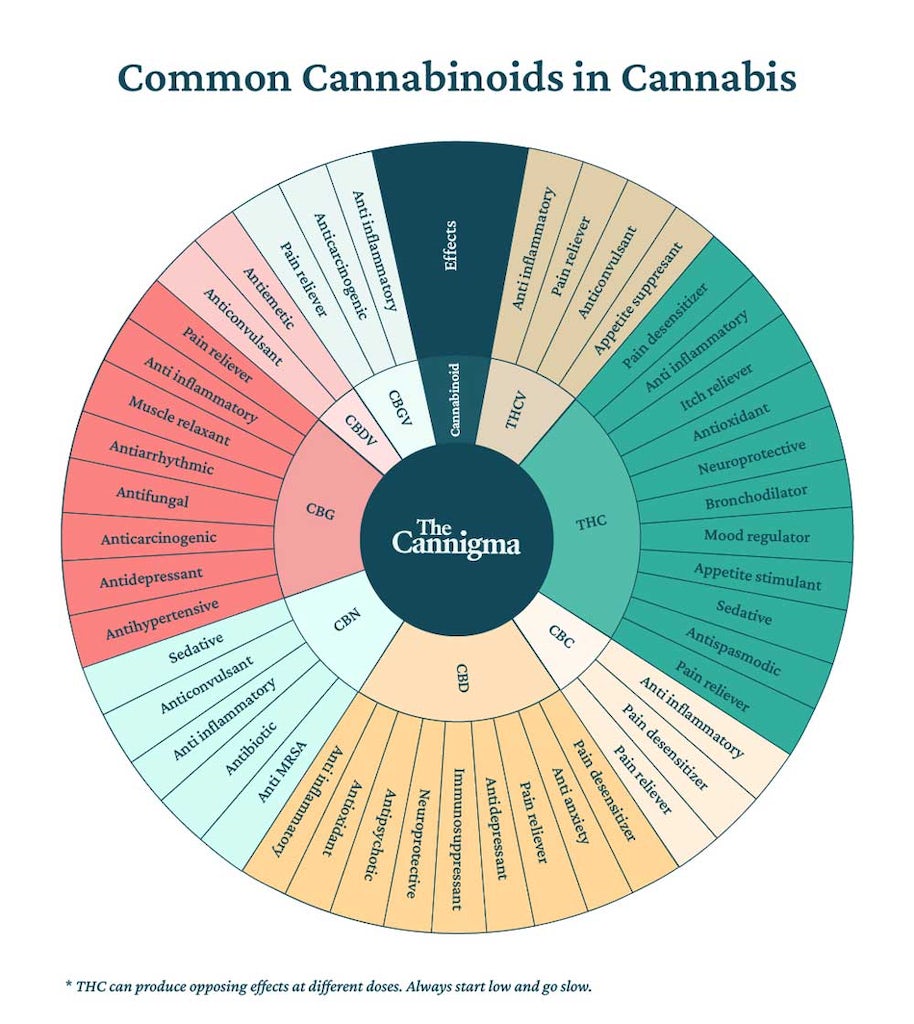
CBDA and COVID-19
In a 2022 study on CBDA and COVID-19, researchers found that CBDA, as well as CBGa, were actually able to block the virus’ ability to bind with host cells. The researchers used human cells and live SARS-CoV-2 virus to test the theory in the lab. When they did, they found that CBDA was able to bind to the spike protein of COVID-19 – the same protein targeted by the vaccine. 4 5
While this is exciting news, it was not a human study, and we still need to see whether CBDA has the same effect when used in actual humans. Criticism of the study has been particularly focused on the concentrations of CBDA and CBDA in the laboratory study mentioned above, which are not achievable inside the human body. Clinical research will need to be conducted to confirm this effect.
It’s also important to note that smoking or vaping cannabis will not add any protective effects from CBDA. Instead, the heating process will convert the CBDA to CBD. This means that if CBDA really can help with COVID-19, it should be taken in an edible form like a tincture or capsule. Additionally, this study specifically looked at acidic or “raw” cannabinoids, and the study also suggests that decarbed or “neutral” cannabinoids do not have this effects. 6
CBDA’s effects and side effects
CBDA has a complex pharmacology. Compared to THC, CBG or even CBD, CBDA shows low affinity (attraction) to either of the main cannabinoid receptors, CB1 and CB2. Instead, CBDA acts via multiple receptor systems, including the serotonin system. By binding to 5-HT1a receptors, CBDA is able to produce antiemetic (antinausea) effects at 1000x lower doses than neutral CBD. It is also able to bind itself to many TRP, PPARα and PPARγ receptors. Beyond receptors, CBDA has been found to inhibit COX enzymes, the same enzymes that are blocked by non-steroidal anti-inflammatory drugs (NSAIDs) like ibuprofen and aspirin. 7 8
We don’t have much information about the side effects of CBDA, given the lack of human studies, but it is possible that it may interact with how other drugs are metabolized – similar to CBD. Always check with a doctor before mixing CBDA with other medications.
CBD vs CBDA
CBDA is an acidic precursor of CBD. This means that CBD always starts out as CBDA and then turns into CBD. This process is called decarboxylation, and it can happen over time with exposure to light or oxygen, or quickly with exposure to heat.
The process is best known for converting non-psychoactive THCa into the potently psychoactive THC. THCa is plentiful in cannabis, and is converted into THC when the cannabis is heated. CBDA (while also usually present in cannabis) is more plentiful in hemp, or ‘high CBD’ strains of cannabis.
While slightly chemically different, CBD and CBDA share many potential medical benefits such as reducing pain, inflammation, seizures, cancer, anxiety and nausea. Given CBD’s established role in managing seizure disorders in childrens, there is a lot of interest in the role of CBDA in the treatment of seizures, with early animal models showing great promise. 9 10
CBDA vs CBGa
Similarly to how CBD is made from CBDA, CBDA actually starts out as cannabigerolic acid (CBGA). CBGA, sometimes called ‘the mother of all cannabinoids’, is the base acidic precursor for all cannabinoids. It has the ability to transform into CBG, but also to other acidic precursors like CBDA and THCa.
These two, CBDA and CBGa, share a low affinity for CB1 and CB2 receptors, interact with numerous of the same TRPs and PPARs, and have both been found to have potential to help prevent COVID-19. 11
Does CBDA make you high?
Like CBD, CBDA does not seem to create the feeling of being high. While we have little research on its effects in humans, none of the research suggests it will have this kind of disorienting or elating psychoactive effect. Still, also like CBD, it does show the capability to have psychoactive impacts such as reducing anxiety. So while it is psychoactive, it is non impairing.
What CBDA products are currently available?
CBDA is plentiful in most all freshly-harvested hemp or ‘high CBD’ strains of cannabis. But the important factor in getting CBDA into your system is to ingest it without it being heated. This means no smoking, vaporizing or cooking the cannabis. One popular method to get CBDA is to juice raw cannabis or hemp leaves, but it is hard to maintain access to fresh leaves all the time. 12
Tinctures or capsules are often the easiest way to consume CBDA. Look for products that specify high levels of CBDA on their test results and don’t need to be heated. These include:
- Tinctures
- Gummies
- Other edibles
- Pills / capsules
- Rosin
- Certain extracts made without heat
- Oil
Keep in mind that when taking a CBDA tincture/oil by mouth, the product can cause a sensation in the mouth similar to a bitter taste or burning/tingling sensation. This is a known effect of CBDA (and sometimes CBD) and is likely related to its actions on TRP ion channels in the mouth and throat. 13
High-CBDA strains
You can find a wide variety of strains that contain high levels of CBDA. Really, any strain with high CBD is also high in CBDA before processing. Some popular options include:
- Cannatonic
- Remedy
- Charlotte’s Web
- Harlequin
- Ringo’s Gift
- Sweet and Sour Widow
- ACDC
- Harle-Tsu
- Canna-Tsu
- Sour Tsunami
- Pennywise
Ultimately, CBDA is a cannabinoid present in most hemp and cannabis, but it is rarely studied. Still, the research we do have shows that there is potential for CBDA to help with conditions like COVID-19, cancer, seizures, anxiety, pain, inflammation and nausea.
More research would help us understand exactly how to utilize this compound to help those with real medical needs.
Sources
- Formato M, Crescente G, Scognamiglio M, et al. (‒)-Cannabidiolic Acid, a Still Overlooked Bioactive Compound: An Introductory Review and Preliminary Research. Molecules. 2020;25(11):2638. Published 2020 Jun 5. doi:10.3390/molecules25112638
- Walsh, K. B., McKinney, A. E., & Holmes, A. E. (2021). Minor Cannabinoids: Biosynthesis, Molecular Pharmacology and Potential Therapeutic Uses. Frontiers in pharmacology, 12, 777804. https://doi.org/10.3389/fphar.2021.777804
- Formato, M., Crescente, G., Scognamiglio, M., Fiorentino, A., Pecoraro, M. T., Piccolella, S., Catauro, M., & Pacifico, S. (2020). (‒)-Cannabidiolic Acid, a Still Overlooked Bioactive Compound: An Introductory Review and Preliminary Research. Molecules (Basel, Switzerland), 25(11), 2638. https://doi.org/10.3390/molecules25112638
- van Breemen, R. B., Muchiri, R. N., Bates, T. A., Weinstein, J. B., Leier, H. C., Farley, S., & Tafesse, F. G. (2022). Cannabinoids Block Cellular Entry of SARS-CoV-2 and the Emerging Variants. Journal of natural products, 85(1), 176–184. https://doi.org/10.1021/acs.jnatprod.1c00946
- van Breemen RB, Muchiri RN, Bates TA, et al. Cannabinoids Block Cellular Entry of SARS-CoV-2 and the Emerging Variants. J Nat Prod. 2022;85(1):176-184. doi:10.1021/acs.jnatprod.1c00946
- Ibid
- Muller, C., Morales, P., & Reggio, P. H. (2019). Cannabinoid Ligands Targeting TRP Channels. Frontiers in molecular neuroscience, 11, 487. https://doi.org/10.3389/fnmol.2018.00487
- Walsh KB, McKinney AE, Holmes AE. Minor Cannabinoids: Biosynthesis, Molecular Pharmacology and Potential Therapeutic Uses. Front Pharmacol. 2021;12:777804. Published 2021 Nov 29. doi:10.3389/fphar.2021.777804
- Formato, M., Crescente, G., Scognamiglio, M., Fiorentino, A., Pecoraro, M. T., Piccolella, S., Catauro, M., & Pacifico, S. (2020). (‒)-Cannabidiolic Acid, a Still Overlooked Bioactive Compound: An Introductory Review and Preliminary Research. Molecules (Basel, Switzerland), 25(11), 2638. https://doi.org/10.3390/molecules25112638
- Goerl B, Watkins S, Metcalf C, Smith M, Beenhakker M. Cannabidiolic acid exhibits entourage-like improvements of anticonvulsant activity in an acute rat model of seizures. Epilepsy Res. 2021;169:106525. doi:10.1016/j.eplepsyres.2020.106525
- Walsh KB, McKinney AE, Holmes AE. Minor Cannabinoids: Biosynthesis, Molecular Pharmacology and Potential Therapeutic Uses. Front Pharmacol. 2021;12:777804. Published 2021 Nov 29. doi:10.3389/fphar.2021.777804
- Anderson, L. L., Low, I. K., Banister, S. D., McGregor, I. S., & Arnold, J. C. (2019). Pharmacokinetics of Phytocannabinoid Acids and Anticonvulsant Effect of Cannabidiolic Acid in a Mouse Model of Dravet Syndrome. Journal of natural products, 82(11), 3047–3055. https://doi.org/10.1021/acs.jnatprod.9b00600
- Muller C, Morales P, Reggio PH. Cannabinoid Ligands Targeting TRP Channels. Front Mol Neurosci. 2019;11:487. Published 2019 Jan 15. doi:10.3389/fnmol.2018.00487
Sign up for bi-weekly updates, packed full of cannabis education, recipes, and tips. Your inbox will love it.

 Shop
Shop Support
Support